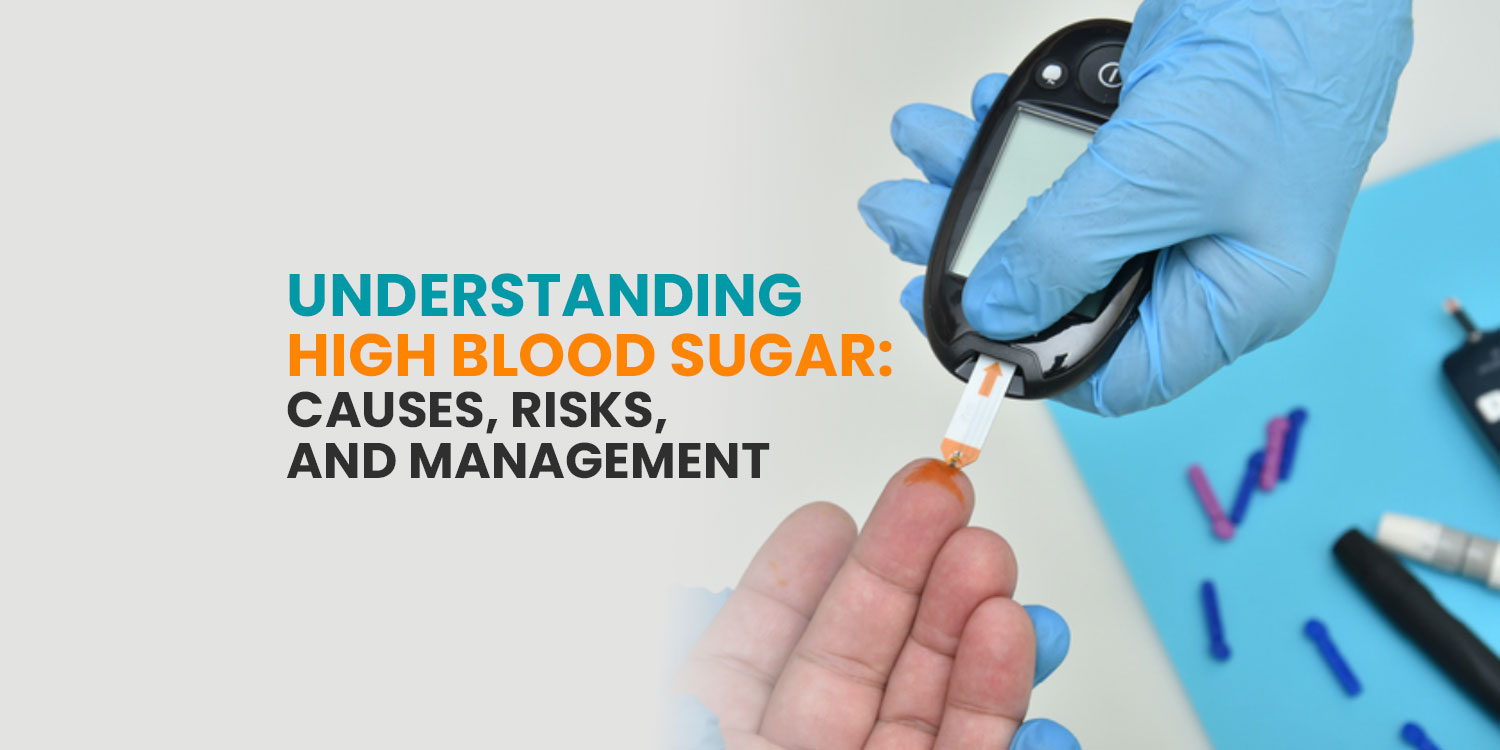Understanding High Blood Sugar: Causes, Risks, and Management
High blood sugar, or hyperglycemia, occurs when the body either lacks insulin or cannot use it effectively. Insulin is a hormone that allows glucose (sugar) to enter cells and be used for energy. When insulin is not functioning properly, glucose remains in the bloodstream, resulting in elevated blood sugar levels and depriving muscles and organs of the energy they need (National Institute of Diabetes and Digestive and Kidney Diseases [NIDDK], 2020).
The Long-Term Risks of High Blood Sugar
Uncontrolled high blood sugar can have serious long-term consequences on health. Some of the major complications include:

- Heart Disease and Stroke: Persistent high blood sugar can damage blood vessels, increasing the risk of cardiovascular events (Centers for Disease Control and Prevention [CDC], 2022).
- Kidney Disease: Over time, excessive glucose can strain the kidneys, potentially leading to kidney failure (NIDDK, 2020).
- Nerve Damage (Neuropathy): High blood sugar can harm nerves, leading to tingling, numbness, and pain, particularly in the hands and feet (CDC, 2022).
- Eye Damage (Retinopathy): Damage to the small blood vessels in the eyes can result in vision issues and even blindness (American Diabetes Association [ADA], 2023).
- Foot Damage: Poor circulation and nerve damage can cause foot complications, sometimes resulting in infections or amputations (ADA, 2023).
Managing Blood Sugar Effectively
The key to managing high blood sugar lies in adopting a proactive approach that includes lifestyle modifications and, when necessary, medication. Some essential strategies include:
1. Healthy Diet: A well-balanced diet can help stabilize blood sugar levels. It is important to include:
- Fruits and vegetables
- Whole grains
- Lean proteins (such as chicken, fish, tofu, or beans)
- Healthy fats (such as nuts, seeds, and olive oil)
Limiting sugary foods and refined carbohydrates can prevent spikes in blood sugar (CDC, 2022).

2. Regular Exercise: Physical activity improves insulin sensitivity. The CDC recommends engaging in at least 150 minutes of moderate-intensity exercise per week, such as walking, swimming, or cycling (CDC, 2022).

3. Monitoring Blood Sugar Levels: Since individual responses to food and activity vary, regular blood glucose monitoring can help identify what works best for each person. Tracking levels can support necessary adjustments in diet, exercise, or medications (ADA, 2023).

4. Medication and Insulin Therapy: Diabetes is often progressive, and many individuals may eventually require medication or insulin to maintain glycemic control. A healthcare provider can help determine the most effective treatment plan based on individual needs (NIDDK, 2020).

Conclusion
Managing high blood sugar requires a combination of healthy eating, physical activity, regular monitoring, and appropriate medical care. Taking control through informed decisions and consistent habits can help reduce the risk of complications and improve overall quality of life. Individuals struggling with blood sugar management should consult their healthcare provider for personalized guidance.
References
American Diabetes Association. (2023). Complications. https://www.diabetes.org/diabetes/complications
Centers for Disease Control and Prevention. (2022). Manage blood sugar. https://www.cdc.gov/diabetes/managing/manage-blood-sugar.html
National Institute of Diabetes and Digestive and Kidney Diseases. (2020). High blood glucose (hyperglycemia). https://www.niddk.nih.gov/health-information/diabetes/overview/managing-diabetes/hyperglycemia




